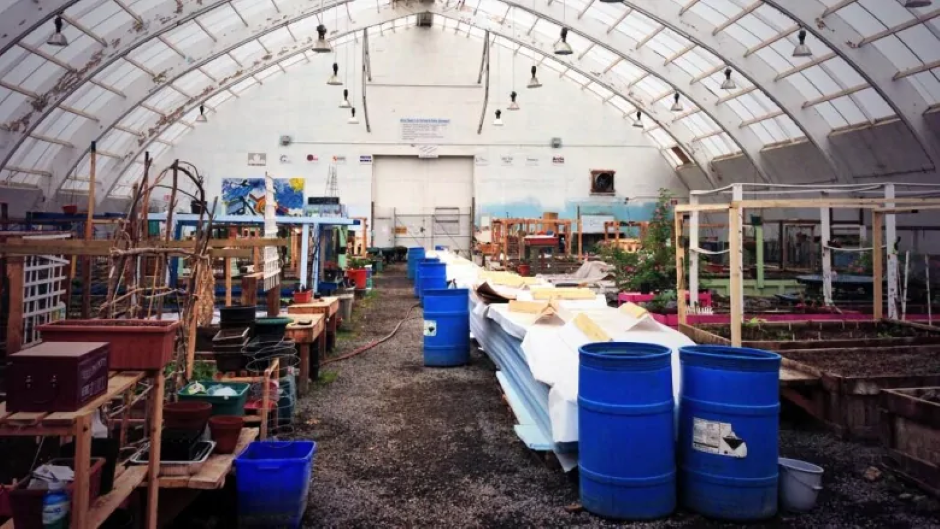Pandemic unexpectedly leads to bounty at greenhouse in Arctic Canada

While the COVID-19 pandemic has ravaged national economies, it’s unexpectedly led to prosperity at the community greenhouse in Inuvik, Northwest Territories.
Having harvested about 2,000 pounds of food in the last two-and-a-bit months, the Inuvik Community Greenhouse is experiencing its best crop ever, says executive director Ray Solotki.
“I would say a truckload of food gets harvested every single week, and we’ve been harvesting now for 12 to 13 weeks,” she said.
The greenhouse expects to produce about 3,500 pounds — if not more — by the end of the season.
“So, yeah, we’re producing an amazing amount of food,” said Solotki.
Pandemic forces creativity
Like so many organizations, the greenhouse was forced to get creative when pandemic-induced restrictions meant its space couldn’t open to crowds of local gardeners in the same way.
So the board of directors decided to close its 18,000-square-foot greenhouse to the public and shift from offering individual, four-by-eight-foot plots, to full-on farming.
“We put [in] four full rows of beans, and two full rows of spinach, and we have four full rows of potatoes,” said Solotki. They’re also growing celery, cauliflower, strawberries, raspberries and rhubarb.

The move has paid off in more ways than one.
Solotki said the greenhouse has also been able to slash the cost of its weekly veggie box, which contains a selection of produce from its market plot, and offer it to many more families.
Now, she said, with a much larger market plot and funding from Community Food Centres Canada, the greenhouse can offer the veggie box for $240 for 12 weeks instead of the previous $400 price. Full subsidies are also available.
Solotki hopes some kind of larger growing operation will continue at the greenhouse, even after the pandemic dies down.
“Eighteen-thousand square feet seems like a lot of space, but when it’s partitioned down, and you each have your own little spot, and you’re only doing your three broccoli, you’re not going to get a whole lot,” she said.
“But if you’re all gardening together and working together in a larger space, and do a higher yield like we’ve been doing, you can see a lot more yield for a lot less work and a lot less money.”
In the meantime, there’s still about 1,500 pounds of food to harvest before the end of the season, said Solotki, including “big-ticket items” like squash and potatoes.
58 dozen eggs
And that’s to say nothing of their 22 chickens, which have laid 58 dozen eggs in less than two months.
“We sell out immediately, so they never stay in the fridge for more than two or three days. The community is lined up outside to get our fresh eggs,” she said.
When the frost sets in and the sun dips back down below the horizon, Solotki said, the plan is to take every leaf, plant and spud left over, and boil it all down with the chicken bones into a soup stock.
“We’re going to donate that out to the community so we can serve as many people in need as possible.”
Written by Sidney Cohen based on an interview with Lawrence Nayllay



